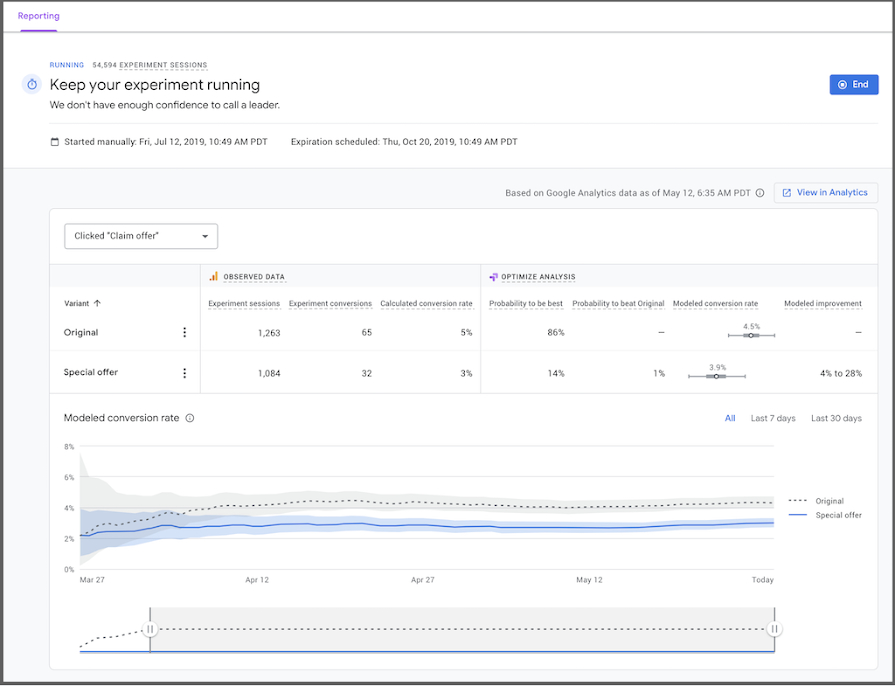What is conversion rate optimisation?
Conversion Rate Optimisation is a process of improving a website (or page) to increase purchases, leads or signups.
CRO is a business strategy at it’s core. It can be only website changes. But quite often other factors such as how you ship products or marketing can come into play.
CRO uses research and data to make informed decisions about what to change on a website to increase conversions.
What is conversion rate?
Conversion rate is the percentage of visitors to your site that become customers. It doesn’t just have to be ecommerce though. Email list sign-ups, software downloads or phone calls could be your goal.
Conversion rate is calculated by dividing your number of conversions by your number of visitors. Then multiply that number by 100 to get the percentage.
How do I optimise my conversion rate?
Optimising your conversion rate is a matter of researching how users interact with your site. I do this for my clients based on multiple sources of data and information. Then I generate ideas that could lead to an increase in conversions and therefor revenue.
Ideas for increasing conversions could be solving website usability problems. Optimising websites for mobile traffic. Changing the copy and messaging of the website to better resonate with users and more.
What sources do you use to find ideas?
Ideas for improving conversion rate, or hypothesis, are found using research.
The starting point is conducting what is called an heuristic analysis. This involves looking at your site from a user’s point of view.
Relevancy – Is the the website and it’s content relevant?
Clarity – Is the messaging clear. Is it clear how to use the website?
Friction – Are there any difficult to use functions?
Distraction – Does the site seem spammy. Is there too much on a page?
Then quantitative research is done. I check things that can be measured using Google Analytics and heatmap software. This tells us what users are doing on your website.
- What pages are causing users to leave the site?
- Where do users leave during the shopping process?
- Where do users click and where do they not click?
- How much of the page are users viewing on average?

In order to really find out what your users are thinking we turn to qualitative research. You might think you know what your users want but asking them can bring new insights. I use the following ways to find recurring problems or questions users have.
- On-site surveys
- Questions users have asked customer support
- On-site chat transcripts
- Customer surveys
All of these research methods are combined to identify conversion issues. The issues are then prioritised by ease, cost and impact.
Issues that are easy to implement, won’t cost a lot in development time and will have a high impact on conversions are what to do first. These are usually technical or usability problems.
How do you know if an idea or change is going to be successful?
Problems that will definitely be successful are the technical or usability problems. If the problem literally prevents a user from buying on your site then fixing will increase your conversion rate.
But for most issues the, hard truth is you don’t.
This is where testing comes in. A/B testing is the most effective tool in testing a hypothesis. If we have an idea that could increase conversions we can test the change against the current version of the website.

A well run A/B test will show if an idea will have an impact on conversion rate. If the test shows conversion rate is up, the change to the website can be implemented permanently.
However, to run A/B tests you’ll need a reasonable amount of website traffic and conversions. To little traffic or conversions will mean the A/B test could be irrelevant because the sample size is too small.
Read more about whether A/B testing is right for your site
If your site hasn’t got enough traffic or customers yet, you can test the success of changes using other data. Product page views, add to cart rate or time spent of site increasing can be a good indicator the change is making a difference.
If an idea for increasing conversions isn’t successful, all is not lost. If a change has little or no effect on conversions then we’ve still learnt something about your website’s users.
CRO is mostly about research. The quality of the hypothesis is important. That is why CRO isn’t set it and forget it.
It’s an ongoing process to improve conversion rate and increase revenue.
The result of CRO program is a website that is well designed, easy to use and appeals to your target market.
There are benefits apart from increased sales. Reduced advertising costs, increased average order value and customer lifetime value.
Make the most of the traffic to your ecommerce store with a CRO / UX audit.
FREE VIDEO TRAININGHow to increase sales and profit for your WooCommerce store
A simple 5 step plan to increase sales and profit for your WooCommerce store without wasting money on ads


